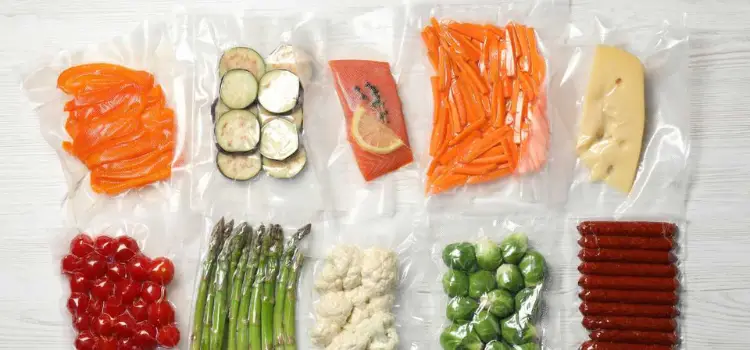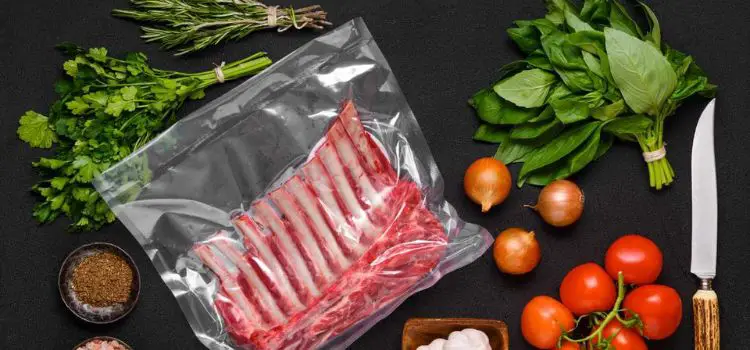As an Amazon Associate, I earn from qualifying purchases

Vacuum sealing has revolutionized food storage and preservation, offering a practical solution to extend the shelf life of various items. By removing air from the packaging, this method minimizes oxidation and prevents the growth of mold and bacteria, making it a popular choice for both households and businesses.
From meats and cheeses to fruits and vegetables, vacuum sealing keeps food fresh for longer periods, reducing waste and ensuring that flavors and nutrients are preserved.
In recent years, the culinary landscape has seen innovations that incorporate vacuum-sealed bags in cooking processes, such as sous vide. As people explore new ways to utilize these bags, a pressing question arises: can you microwave vacuum-sealed bags? This article delves into this query, examining the feasibility, safety, and practicality of microwaving vacuum-sealed bags.
The Concept of Microwaving Vacuum-Sealed Bags
Why would someone consider microwaving a vacuum-sealed bag? The answer is simple: convenience. Microwaves offer a quick and easy method to heat food, making them a staple in many kitchens. With busy lifestyles, the ability to quickly prepare meals without the hassle of transferring food to different containers can be appealing.
Microwaving vacuum-sealed bags might be considered in scenarios where time is of the essence, or when the contents of the bag need to be heated evenly without losing moisture. This could include pre-cooked meals or frozen items that need a quick thaw. However, the practicality of microwaving such bags depends on various factors, including the materials used and the nature of the food inside.
Safety Considerations
Safety is paramount when it comes to microwaving vacuum-sealed bags. The primary concern is whether the materials are microwave-safe. Not all vacuum-sealed bags are designed to withstand the microwave’s intense heat and electromagnetic waves. Using the wrong type of bag could lead to melting, chemical leaching, or even fires.
Potential risks include the release of harmful chemicals into the food, uneven heating leading to cold spots, or the bag rupturing. To mitigate these risks, it is crucial to use bags explicitly labeled as microwave-safe. These bags are manufactured to endure high temperatures without compromising safety or food quality.
Users should also adhere to manufacturers’ guidelines, such as puncturing the bag to allow steam to escape, thus preventing pressure build-up. This step reduces the likelihood of bag rupture and ensures more uniform heating.
Types of Bags Suitable for Microwaving

- Microwave-Safe Materials: Microwave-safe vacuum-sealed bags are made from materials designed to withstand the microwave environment, typically incorporating polyethylene or similar substances that resist adverse reactions at high temperatures.
- Chemical Leaching Prevention: These bags are engineered to prevent chemical leaching, ensuring that food remains safe for consumption during the heating process.
- Regular Vacuum Bags Limitations: In contrast, regular vacuum bags lack the same heat resistance and safety features, as they are primarily intended for storage and preservation rather than cooking or reheating.
- Risks of Non-Microwave-Safe Bags: Using non-microwave-safe bags can pose risks, including potential chemical release and damage to your microwave, highlighting the importance of choosing the right bags for microwaving.
- Choosing the Right Bags: When selecting bags for microwave use, check for labeling or product information that confirms they are microwave-safe. This ensures the safety and quality of your food while protecting your microwave from damage.
Benefits and Drawbacks of Microwaving Vacuum-Sealed Bags
Benefits of Microwaving Vacuum-Sealed Bags:
- Convenience: Microwaving vacuum-sealed bags allows for quick heating without needing to transfer food to another container. This saves time and reduces dishwashing, making it ideal for busy lifestyles or when prepping meals in advance.
- Moisture Retention: Microwaving helps maintain the moisture content of food, preventing it from drying out, which is a common issue with traditional reheating methods. This is particularly advantageous for soups, stews, and saucy dishes that can lose flavor and texture when reheated dry.
Drawbacks of Microwaving Vacuum-Sealed Bags:
- Safety Hazards: There are safety concerns associated with microwaving, including the risk of burns from hot spots or the bag itself. It’s essential to ensure that the vacuum-sealed bag is microwave-safe to avoid potential hazards.
- Uneven Heating: Microwaves can heat food unevenly, leading to some parts being excessively hot while others remain cold. This uneven cooking can affect the overall food quality and pose health risks if certain areas remain underheated, allowing pathogens to survive.
- Not Suitable for All Foods: Certain foods, especially those high in fat or sugar, may not heat uniformly in a microwave. Additionally, some dishes may lose their texture or flavor integrity when microwaved, making them less enjoyable to eat.
Conclusion
Microwaving vacuum-sealed bags offers a mixed bag of benefits and challenges. While the convenience is undeniable, ensuring the correct materials are used is critical to avoid safety hazards. Microwave-safe bags are essential for this process, providing the necessary resilience to withstand the appliance’s conditions.
In summary, while it is possible to microwave vacuum-sealed bags, it requires careful consideration of the materials and the type of food being heated. By adhering to safety guidelines and using appropriate bags, you can enjoy the convenience of this method while minimizing potential drawbacks. As with any cooking technique, understanding the limitations and best practices will help you make informed decisions that ensure both safety and food quality.
FAQ
Can you heat up food in a vacuum sealed bag?
Yes, you can heat food in a vacuum sealed bag using methods like sous vide. However, ensure the bag is made from food-safe, heat-resistant materials to avoid melting or contamination. Always verify the manufacturer’s instructions to confirm the bag’s suitability for heating.
Can I put a vacuum bag in the microwave?
Only if the vacuum bag is labeled as microwave-safe. Regular vacuum bags may melt or release harmful chemicals when microwaved. Use specific microwave-safe vacuum bags to ensure safety and food quality, and adhere to guidelines like puncturing the bag to release steam.
Does heat affect vacuum sealed bags?
Heat can affect vacuum sealed bags, depending on their material. Bags not designed for high temperatures may melt or degrade, potentially contaminating food. To prevent issues, use bags specifically made for heat exposure, such as those safe for boiling or microwaving, following the manufacturer’s recommendations.
As an Amazon Associate, I earn from qualifying purchases